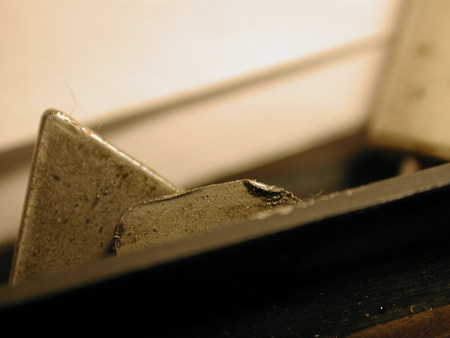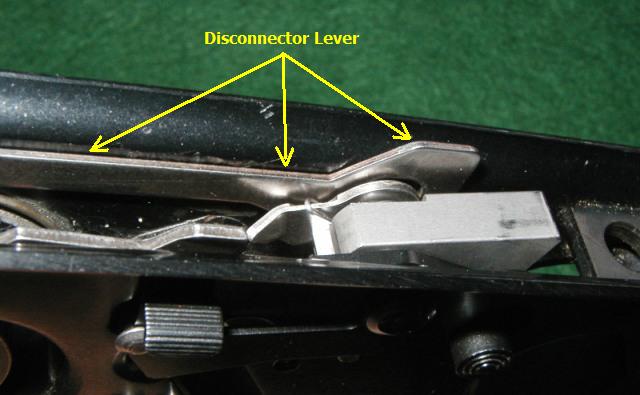Hi Pipestone,
First let me apologize that it has taken me so long to respond to your question. I have been very, very busy lately.
In order for your trigger to feel a slap on recoil, the disconnector lever has to transfer energy to the trigger. This energy can come from one of two places.
One place is possibly from the disconnector getting hung up on the sear. The hang-up would allow the sear to push the disconnector lever rearwards as the sear face resets on the hammer hook. The problem with this is the movement is not very much, and not likely to contain enough energy to transfer a shocking sensation to your trigger finger. Even though this is not a likely source of the problem, you can isolate the sear out of the equation by substitution of an original (unmodified) OEM sear in your pistol and test firing.
Next, the disconnector is absorbing recoil impact from the bolt. If the disconnector is catching on the bolt then the recoil energy could be transferred directly to the trigger. As the bolt travels very quickly, the energy would be significant and definitely strong enough to cause your finger to sting. This energy would be amplified even more on the last shot, when the bolt is locked open.
Inspect the upper edge of the disconnector, where it contacts the bolt. Is it smooth? Or is it dented? Here's a picture like what I'm talking about.

It may not be as pronounced as this one but the disconnector should be smooth. Like this one.

These are just a few possiblities for the problem. You mentioned a trigger job but didn't mention what was done to perform it. Also I have to go on theory without being able to inspect the firearm.
I hope this helps.
R,
Bullseye




